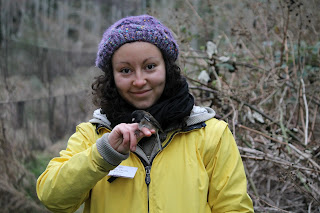They soar through the high grass lands of the Andes, searching for carrion using their keen eyesight and highly developed sense of smell.
 |
| The high grasslands is termed 'páramo' in spanish. It is the páramo that is diminishing because of cattle fields, agriculture, and infrastructure. |
When they do encounter a meal, they settle down and gorge themselves, as they are unable to carry anything along with them to save for later (partly due to decay of raw meat and their feet are unable to grasp anything: see fig. 3)
 |
| Tearing flesh with their strong toes and sharp beaks |
 |
| Fig. 3 Their back toe is so stubbed that it does not have the capability to grasp anything, whereas raptors (hawks, owls etc.) that hunt have a longer opposable toe to grab their prey. |
The Andean condor is a sexually dimorphic species, in which the male and the female look different. The difference can be slight (for example, difference in size) or drastic (where you might think the males and females are two different species). In this case, the you can tell they are of the same species, but can tell them apart quite easily.
The male condor is slightly bigger and has a flappy pinkish head, like a turkey. The flappy mohawk is called a comb and is unique to each condor. They have dark-honey coloured eyes which contrast with those of the female.
The female has a darker head with no comb and bright red eyes.
Typically in birds, sexual dimorphism has to do with mating, ie. choosing the male condor with the best looking comb, but there could also be other reasons for the difference, one that comes to mind is: increase fitness for the division of labour of the sexes (maybe the red eyes of the female helps her survival or the rearing her young somehow).
The relationships between the condor sexes is funny. It isn't the case where the biggest condor (the males) dominates. Dominance seems to depend on the couple. Here at the hacienda where I volunteer, there are three cages with a couple in each that we observe everyday. During feeding time, the males in the first two cages seem to have full reign of the meat, leaving the scraps for the females once they're done with it; conversely, in the third cage, the female takes first shift with the meat, usually fending off the male successfully.
 |
| In this picture, the male seems to have gotten himself a piece from under her nose, but she immediately takes it back. |
Anyways, that is all for now on the Andean Condor, if you have any questions, don't hesitate to ask!
-Barnacle Babe reporting from Ecuador.





















